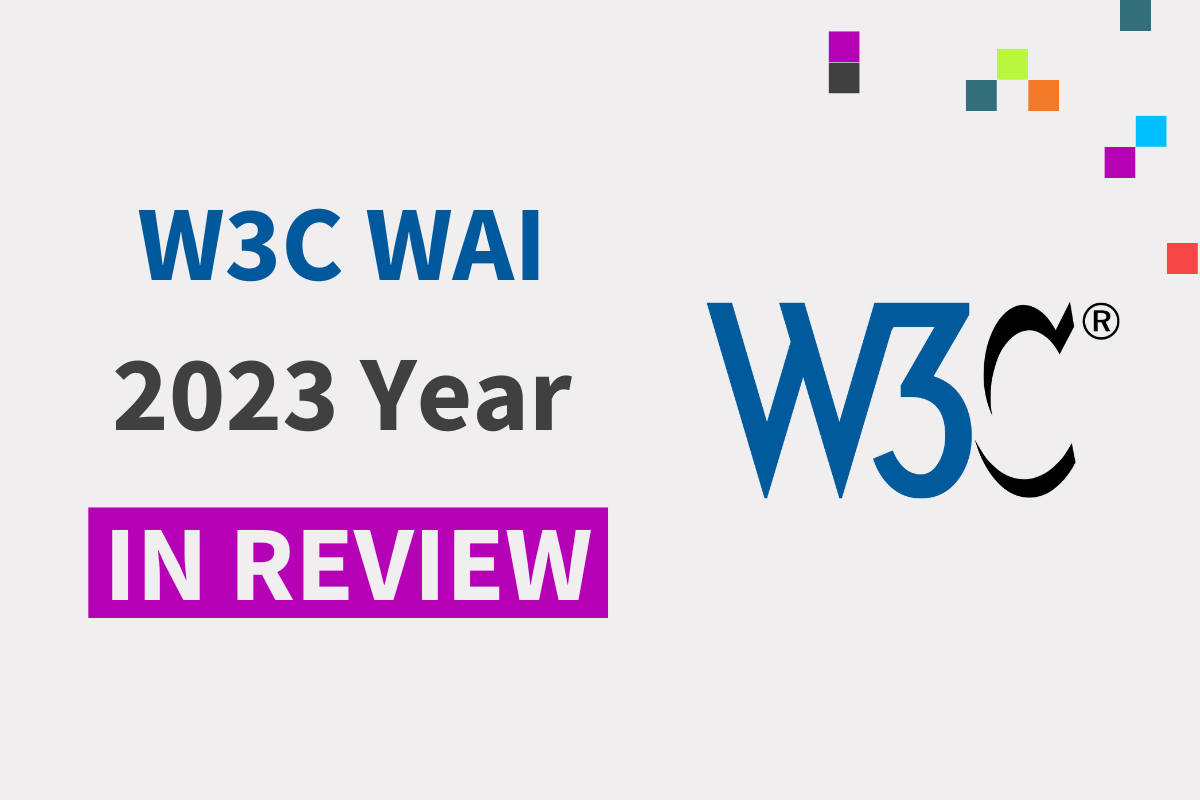
W3C WAI 2023 Year in Review.
Written by Centre for Accessibility Australia (CFA Australia), CEO, Dr. Scott Hollier.
Dr. Hollier represents CFA Australia on the W3C Advisory Committee and is the Co-Convenor for the W3C WAI APA Research Questions Task Force.
What a year it has been!
W3C as an organisation has arguably seen its most significant changes since its inception with its new incorporated structure, new leadership and even a new Director specifically in accessibility while continuing the development of global web standards.
Yet despite significant changes within, for most people involved in W3C, including CFA Australia, the important work continues and 2023 has noted a number of significant steps forward in the work of W3C’s Web Accessibility Initiative (WAI).
WCAG 2.2
The development of a new version of WCAG always gets attention, and this year has seen the Accessibility Guidelines Working Group publish its eagerly-awaited update of the Web Content Accessibility Guidelines (WCAG) Standard, now moving to version 2.2. to improve support for people with cognitive disability. As the release of WCAG 2.2 marks the first major update to the standard in five years, there’s several new Success Criteria to support accessibility improvements in websites, apps and documents.
To find out more, have a look at our WCAG 2.2 being dropped news item that provides all the new Success Criteria in WCAG 2.2, our updated Understanding Accessibility resource and the direct WCAG 2.2 resources provided by W3C itself.
Collaboration Tools Accessibility User Requirements (CTAUR)
With online collaboration continuing to grow, it’s important that tools such as Google Docs and Microsoft Word Online meet accessibility guidance. To assist, W3C WAI has been developing guidance for collaboration tools. The CTAUR outlines various accessibility-related user needs, requirements and scenarios for web-based collaboration tools. These typically include one or more specific collaborative features such as real-time content editing by multiple authors, support for comments annotations, and revision control.
CFA Australia has been involved in the development of this work and a recent draft update was published in October with the final version likely in the new year. More information can be found directly on the CTAUR webpage.
AI Symposium
Artificial Intelligence (AI) has been a big focus of 2023 as ChatGPT and related tools continue to grow in popularity for conversational-style generative AI tools. As such, it has been important to ask questions about the implications for AI in terms of accessibility. W3C WAI hosted an AI symposium to provide an opportunity to discuss the implications and it’s well worth having a look at its findings. To learn more about the symposium, papers, presentations and outcomes, visit the AI symposium page.
WCAG 3.0 draft
The last point that’s important to note in terms of W3C WAI work is the progress towards WCAG 3.0, previously known as Silver. Importantly the ‘W’ in ‘WCAG’ for 3.0 does not stand for ‘Web’, but rather ‘W3C’, making it technically the W3C Content Accessibility Guidelines 3.0.
This may all seem a bit confusing given WCAG 2.2 has only just been released, but the thinking here is that WCAG 3.0 is the next-generation accessibility standard that goes beyond just the web – it represents user agents, authoring tools, traditional web, apps and other things as an all-encompassing accessibility standard. If you’d like to learn more, there is an updated 2023 draft available and well worth a look at this very early stage of development.
Well, that about wraps it up for 2023.
On behalf of everyone associated with CFA Australia, I’d like to thank you for your support and wishing you a safe Christmas and New Year.
